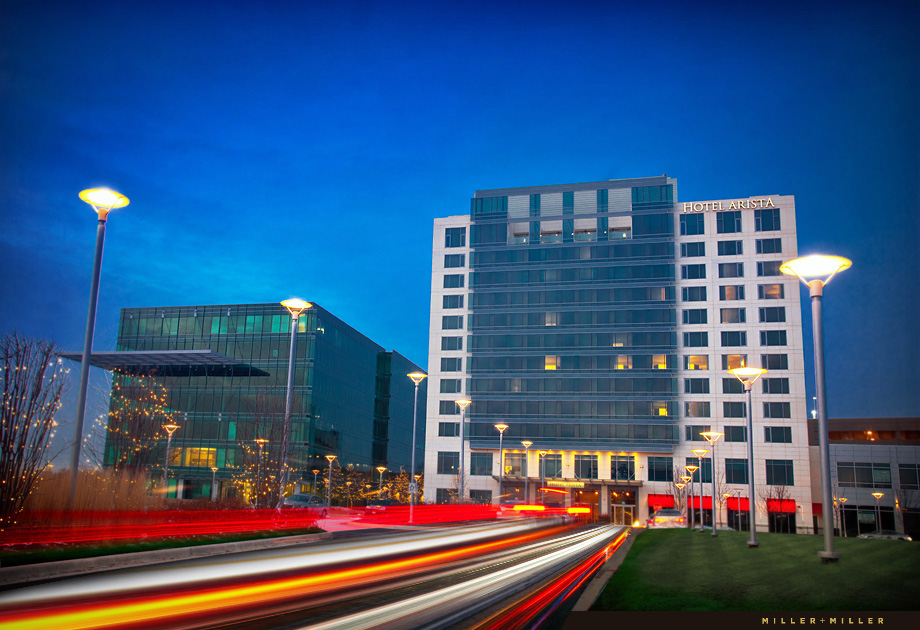Rush University Medical Center Hospital Tower in Chicago
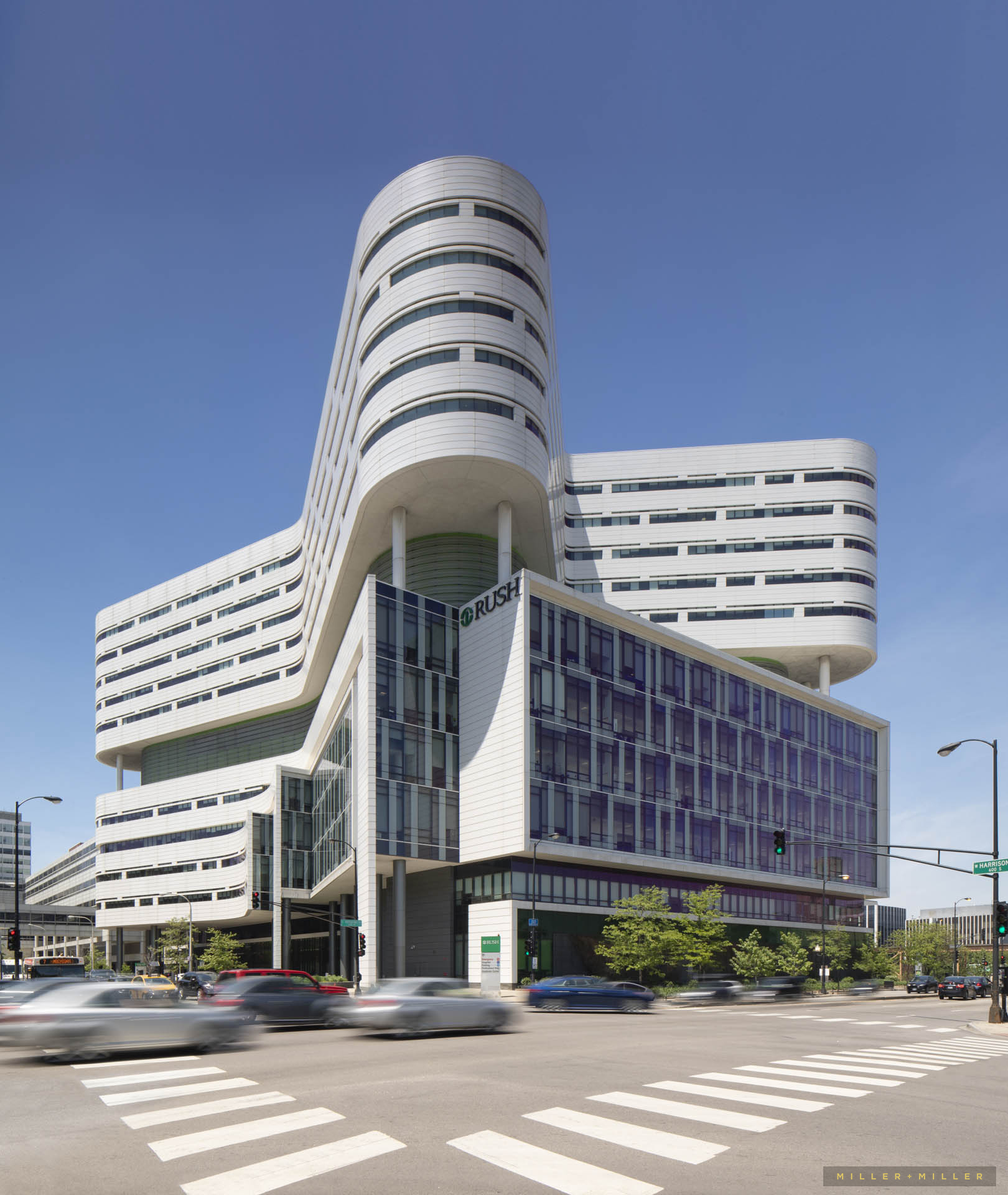
Rush University Medical Center Chicago
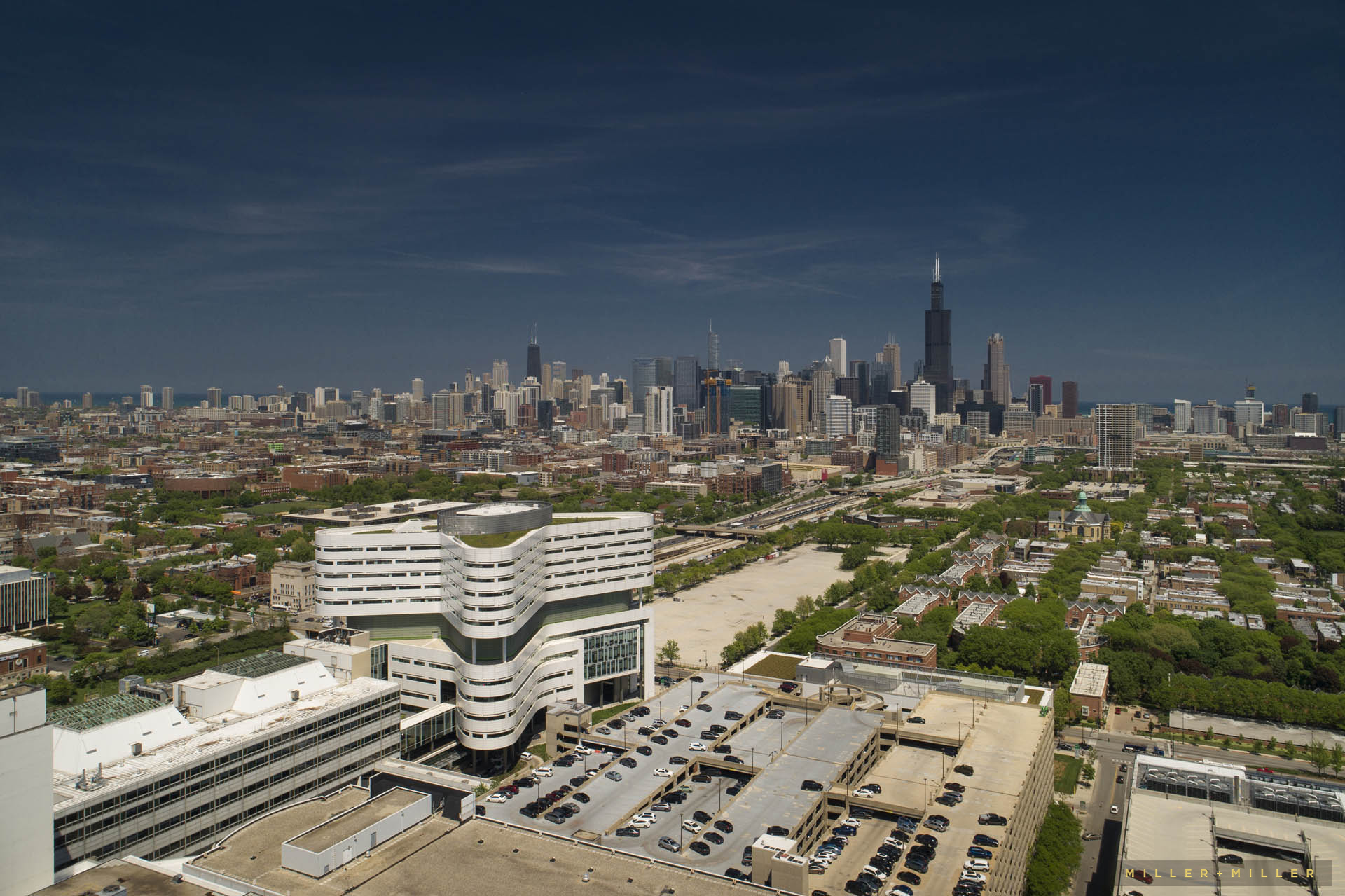
Chicago Drone Photographer
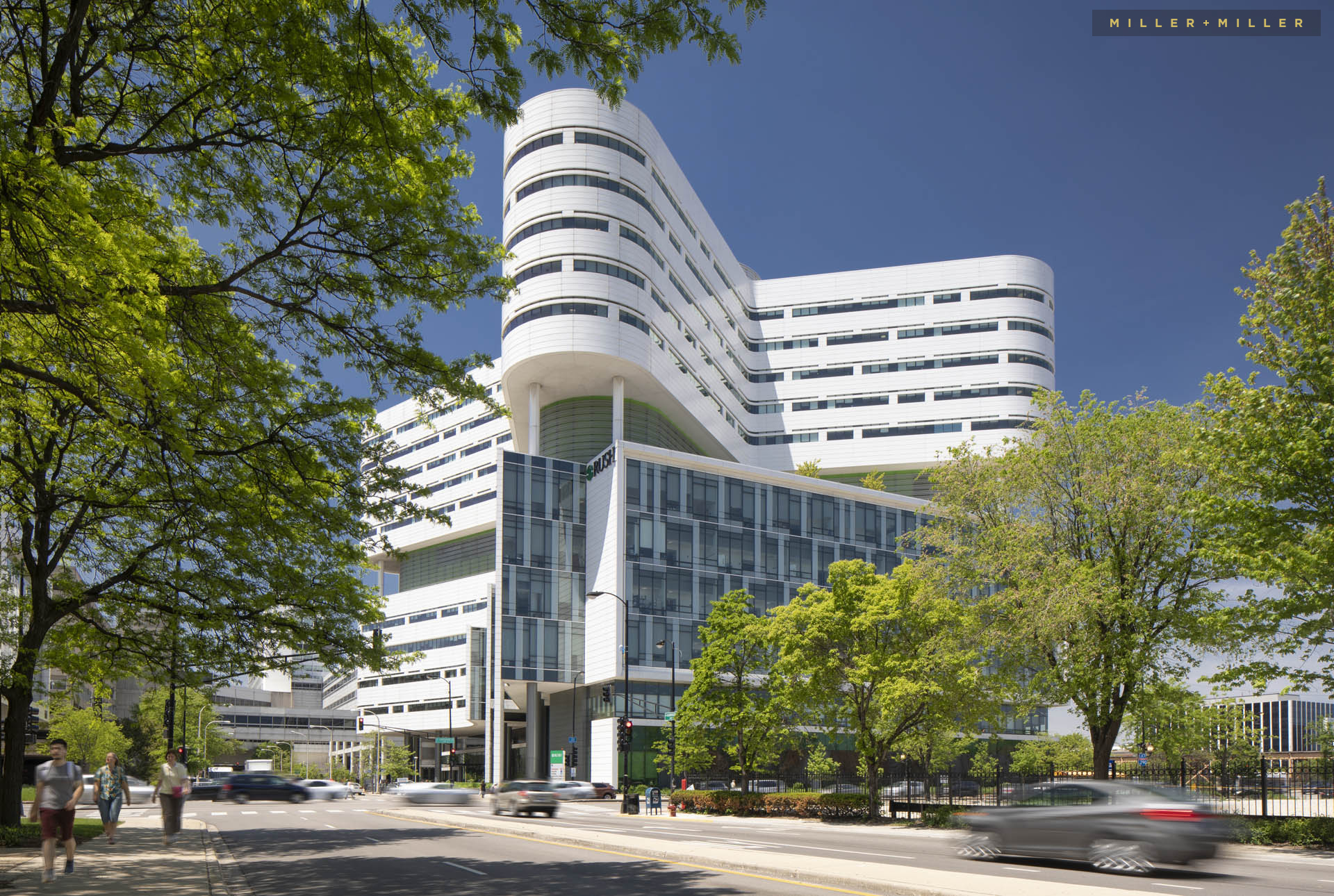
Chicago Architectural Photography
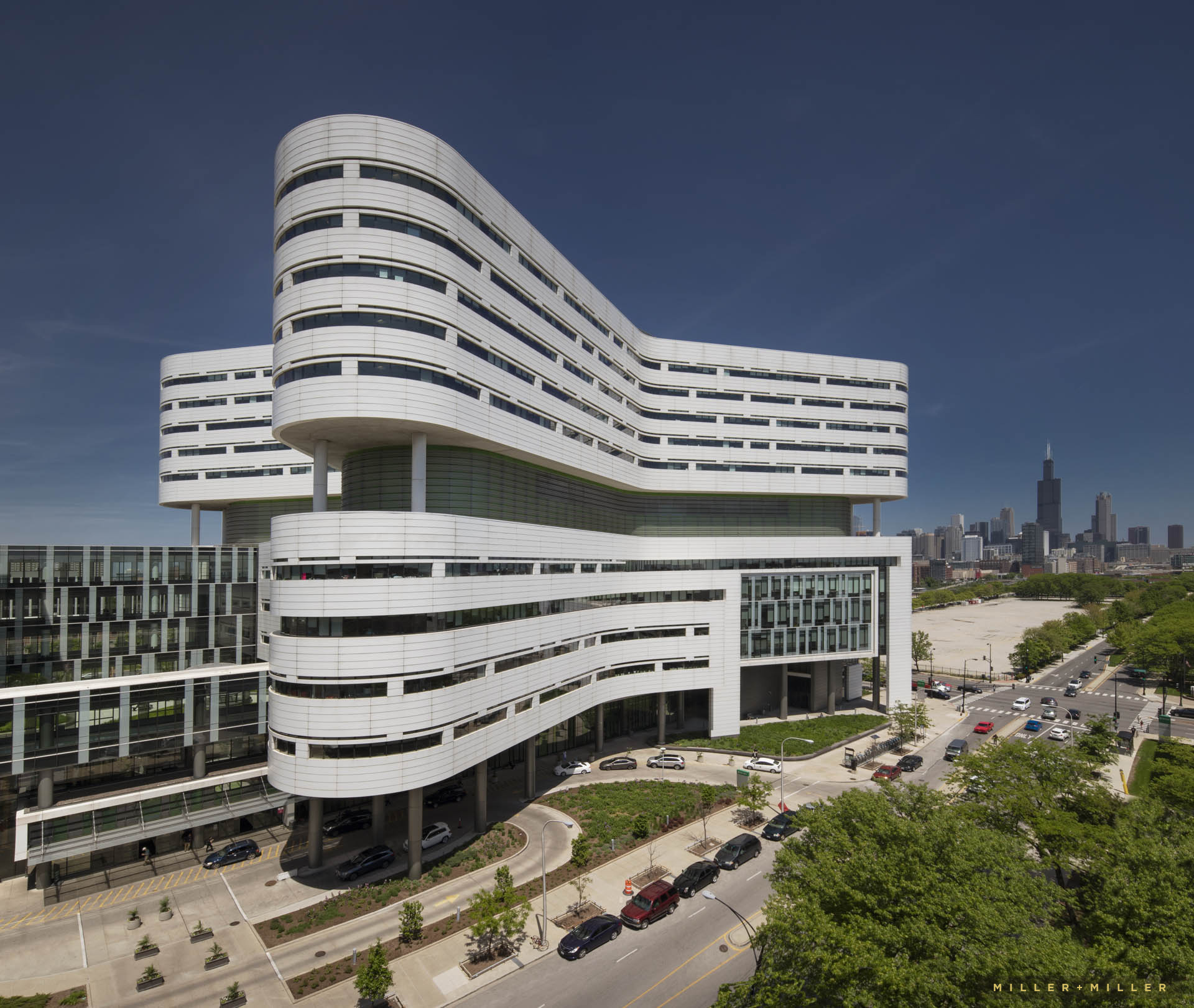
Perkins + Will Chicago Architect

Power Construction Company Illinois

Walsh Construction Chicago

Thornton Tomasetti Structural Engineer

Illinois Landscape Architect Designer Hitchcock Design Group

Alucobond Exterior Metal Composite Panels 3m Adhesives

Walker Parking Consultants Chicago

Jacobs Engineering Group Structural Building Construction Services

Chicago Aerial Photographer
Introducing the new Rush University Medical Center Hospital Tower Chicago on 1600 West Harrison Street. Construction on this LEED Gold certified, 386 patient room, 800,000-square-foot hospital tower lasted from July 2008 to July 2011. Boasting a Height of 252 ft it has numerous award winning, state-of-the-art treatment facilities including operating rooms, radiology suites and emergency departments. Designed by Architect Ralph Johnson FAIA of Perkins+Will it is situated in the Medical District / Near West Side neighborhoods overlooking the Eisenhower Expressway & Chicago Skyline.
The unique footprint of the new Rush University Medical Center building ensures that each patient room is identical, to create efficiency for the staff, while maximizing the amount of exterior wall surface and the number of windows. This allows daylight into, and views from, each patient room. Nurses stations are positioned along the core, and the rounded rooms at the end of each point of the star are left open for lounge and consultation space.
This 386-bed hospital tower sits adjacent to I-290 Eisenhower expressway feeding downtown Chicago and consists of a rectangular base containing medical diagnostic and treatment facilities, topped by a butterfly-shaped patient bed tower. The new hospital tower’s unique butterfly shape is a departure on many levels for healthcare design. It is the direct result of an “inside-out” approach to its design. Close collaboration with RUMC doctors, nurses and administrators culminated in the creation of full-scale mockups, in which hospital staff walked corridors and rooms drawn to scale in an empty parking lot. The butterfly shape that evolved out of these exercises accomplishes a couple of important goals. Aesthetically, it forms an iconic and uplifting presence on Rush’s campus and along the nearby expressway. Functionally, the shape shortens distances between patients and nurses in an effort to reduce stress for staff and provide patients with extra peace of mind knowing that help is immediately accessible. It really embodies the concept of patient-centered care. Our architectural photography exterior hospital building photo shoot in Chicago combined Chicago aerial drone photos and exterior hospital building photography to not only showcase building’s architecture in photos, but also providing from a photographers perspective a preview of the high-rise hospital’s views from the vantage point of the upper level’s hospital windows.
Thornton Tomasetti was the structural engineer for the multiyear redevelopment plan, providing structural design for an award-winning 845,000-square-foot, 14-story hospital addition; an entry pavilion that connects to the existing hospital; and the renovation of the existing hospital. The project included the design and construction of a new loading dock, utility tunnels, a pedestrian bridge, a central utility plant and a medical office building. The new hospital addition utilizes a steel-frame system with steel columns and composite steel beams. The lateral system is composed of reinforced concrete shearwalls. The addition’s foundations are belled and straight shaft caissons. The addition incorporates an interventional platform concept that devotes three floors to surgery, imaging and specialty procedures and allows multiple specialists to collaborate and treat patients using state-of-the-art technologies. The entry pavilion serves as the main entrance to both the new addition and the existing hospital. The pavilion boasts a three-story-high lobby area with an open-air terrarium that extends 40 feet to a rooftop garden. Natural daylighting filters into the space through two skylights. Pedestrian bridges running through the pavilion improve patient conveyance and circulation by providing a direct route from the patient floors to specialists located in the new hospital. The new hospital building is the largest new construction healthcare project in the world to be LEED Gold. (Noted: Thornton Tomasetti is also providing structural design services for Saudi Arabia’s Jeddah Tower, which will become the world’s tallest building at more than 1,000 meters, and will be the first man-made structure to reach 1 kilometer in height.)
Collaboration on design concept & structural complications
Perkins+Will worked closely with hospital clinicians during the design phase to create a new hospital building that would embrace patient comfort, safety, efficiency, and quality of care—ultimately, a facility that would house 304 acute care and critical care beds, 72 private neonatal intensive care rooms, 28 operating rooms, 14 procedure rooms, and 10 labor, delivery, and recovery rooms. “Rush’s Office of Transformation organized task forces chaired by selected leaders from the client side, who met over the course of several months with the Building Team to discuss specific aspects and departments of the project,” says Bridget Lesniak, AIA, a principal with Perkins+Will. Task forces for each department met with the Building Team to plan layouts that accentuated the hospital’s best operational practices while discouraging inefficient ones. For example, the Hospital Building Standards task force reviewed architectural and MEP systems for all typical rooms, which provided vital information regarding operations, product selection, liability, infection control, and clinical concerns. “Especially standardization, which was the main driver for this project,” says Lesniak.
The innovations developed between the Office of Transformation and the Building Team included:
• The butterfly shape, which gives nurses a clear sightline to patient rooms and puts them closer to patients.
• Operating-room quality air throughout all patient care areas, and even higher quality air circulation in surgical suites.
• Single-bed rooms designed with separate zones for the patient, the patient’s family, and staff. Patient rooms have a uniform design, so physicians and nurses will find the same equipment in the same place to ensure seconds are not lost in an emergency.
Getting the tower to sit right
Meanwhile, the structural design for the 14-story Tower faced complications. Initial designs had its base connected directly to the basement of Rush’s existing hospital building, which extended 30 feet under the new facility. “The lower level of the existing building extended a significant distance below grade in the direction of the new addition,” says Lesniak. “Attempting to put in foundations for a 14-story building in this location would have been very expensive and extremely time consuming.” The Building Team assembled for a constructability and value engineering session. The solution: pull the two buildings apart and redesign the new hospital building.
Delivery method: PM/CM agency multi-prime
Separating the new and existing hospital structures actually simplified the foundations, eliminated supercolumns, and allowed a rectilinear column grid that eliminated the need for a transfer truss system. A multistory bridge was built to connect the Tower back to the existing building, a structural redesign that saved more than $40 million and resulted in a more finely engineered building with no reduction in scope. The newly created space between the two buildings allowed for the inclusion of the three-story, 10,000-sf Edward A. Brennan Entry Pavilion, made possible through $16 million in private donations. It features a four-story terrarium that is open to the elements, circular skylights that provide natural lighting, seating areas, and a centrally located reception area. Even though it was a late addition to the Rush transformation program—the Tower’s steel and concrete structure was complete and 50% enclosed—the Brennan Entry Pavilion was finished three months ahead of schedule and in time for the grand opening.
Other cost-saving efforts by the Building Team included:
The application of simulation modeling to review and validate the operational space program, which led to improvements in the utilization of numerous spaces—saving $7.8 million.
•A strategy for mitigating floor moisture to avoid the application of accelerants—saving $5 million.
•Reengineering the support steel for patient lifts and booms and lights—saving $1.05 million.
•Negotiating consultant and contractor proposals—saving $26 million.
A military approach to the emergency management departments
Unique to the Rush new facilities is the first-floor Emergency Department, which houses the Robert R. McCormick Foundation Center for Advanced Emergency Response. “This is the nation’s first facility designed to provide care for patients involved in chemical, biological, and radiological disasters,” says Dr. Dino Rumoro, Rush’s chair of emergency medicine. “We have to be ready for any type of disaster that can hit the city of Chicago.” Modeled after a military emergency command center, the room measures 40,000 sf and includes 60 beds in three pods of 20 rooms each. Each patient room is fitted with a double set of gas and electrical outlets. In the event of a mass casualty situation, two patients can be placed in each room. In case extra capacity is needed, gas and electrical outlets are hidden behind panels on columns in the adjacent Edward A. Brennan Entry Pavilion.
“Many new emergency departments are building in disaster response features, but none to the capacity that we have done by incorporating large-scale decontamination, respiratory infectious illness, and surge capacity,” says Dr. Rumoro. Traditional emergency rooms have decontamination areas and showers to serve up to six patients. Rush’s emergency response center can serve and decontaminate several hundred patients in one hour. The ambulance bay can also be closed to vehicles, and decontamination showers can be set up to wash down large numbers of patients simultaneously. Contaminated water is collected in a 10,000-gallon tank rather than directly discharged into the city sewer system.
“The hope is Rush developed a model for future emergency department design and Centers for Advanced Emergency Response will be required in the future for hospitals in large population centers,” says Dr. Rumoro. At a ceremony for Rush’s new Tower in December 2011, Dr. Larry Goodman, CEO of Rush, said, “This was a dedicated team effort by our board, staff, and management to create a 10-year plan to address our needs while improving clinical care.” Building Team Award Judge Peter Rumpf, integrated construction manager for Mortenson Construction Real Estate Development Company, Mortenson.com Elk Grove Village, Ill., echoed Goodman’s comments: “It was a very complex job that took a lot of collaboration and communication between the owner and the Building Team in order to successfully complete the project.”
2012 Building Team Awards Platinum Award
In the 2000’s Rush University Medical Center unveiled ambitious plans for a 10-year campus redevelopment project on the Illinois Medical District / Near West Side neighborhoods of Chicago. With a total cost of $654 million, the main cornerstone of the transformation was an 840,000-sf, 14-story butterfly-shaped, four-pointed star, X like, hospital building, called the “Tower”, that included a technologically advanced emergency room prepared to handle any type of pandemic or chemical, biological, nuclear or radiological disaster / attack that may strike Chicago, IL.
During the global financial crash of July 2008, steel erection was only about 30% complete. Rush officials were concerned they might not be able to obtain the necessary funding to complete the project. The Building Team, led by the Power/Jacobs Joint Venture—an affiliation of Power Construction Co., Schaumburg, Ill., and Jacobs Engineering Group, Pasadena, Calif. (PM/CM), and architect Perkins+Will, Chicago—worked to develop a financial plan that would allow the project to keep moving. A multi-prime contracting strategy enabled the Building Team to award contracts to multiple prime contractors based on when the work was ready to be bid and start. More to the point, the plan was flexible enough to slow down or stop construction at any time without committing to the balance of the contracts.
As construction proceeded during the economic meltdown, the Building Team was able to help Rush remain on course financially while pushing the limits of value-added engineering and construction. In late 2011, Rush and the Building Team unveiled a LEED-NC Gold tower that was completed on time and within budget, thanks, in part, to the multi-prime contracting strategy. In singling out Rush University Medical Center by awarding a Platinum designation, the judges for Building Design+Construction’s 2012 Building Team Awards recognized the Rush Building Team for overcoming the unforeseen financial constraints, developing a structural redesign of the tower that saved Rush $40 million, and completing one of the most innovative emergency response centers in the U.S. “For a job of that size to get done during the recession is pretty impressive,” says Building Team Award Judge Jeremy Oremland, a financial analyst with Magellan Development Group LLC, Chicago.
More Awards
The new hospital building at Rush University Medical Center, the Tower, recently received two awards in this year’s American Institute of Architects (AIA) Chicago Design Excellence Awards competition. The Divine Detail award gives special recognition for the terrarium and Edward A. Brennan Entry Pavilion for its warm and inviting design, and the Interior Architecture Award for Rush’s “inside-out” design approach to support an environment of health and wellness. The American Institute of Architects (AIA) Healthcare Awards program showcases the best of health care building design and health care design-oriented research. The projects that are selected exhibit conceptual strengths that solve aesthetic, civic, urban and social concerns, as well as the requisite functional and sustainability concerns of a hospital.
Divine Detail Award – Special Recognition
The Edward A. Brennan Entry Pavilion provides a welcoming space for patients and visitors, as well as a critical link between the new and existing care facilities. The focal point of the pavilion is a 3-story high open-air terrarium, which introduces an exterior landscaped space into the interior without creating air contamination issues associated with interior plantings. Laminated low-iron glass is curved to fit a freestanding steel pipe frame that spans 50 feet through an aperture in roof to provide a sculptural element both inside the Pavilion and on its level 4 roof garden which relates to the two nearby skylights. The frame, a tilted elliptical cage that tapers to a circle, also provides a means to maintain the exterior (internal) face of the point-supported glass. Donors’ names are subtly added to the lower glass units for recognition. Light studies showed that, although the terrarium provided significant daylight to the interior, illumination at its floor level would be insufficient for most plant types. The team therefore developed a plant palette based on deep forest environments. The combination of ferns, mosses, spring bulbs, and deciduous trees mimic a natural environment and change with the seasons.
Interior Architecture Award – Citation of Merit
The Tower was designed using an “inside-out” approach. A focus on patient, family and staff comfort and improved outcomes inspired both the butterfly-shaped design of the bed tower and a number of interior design solutions to support and enhance an overall environment of health and wellness. The four triangular-shaped points that comprise the structure of the butterfly-shaped tower were designed to minimize steps between nursing stations and patient rooms. Nursing stations are decentralized and open to accommodate barrier-free consultation. Each patient room contains distinctly expressed zones for patient, family and caregiver. Throughout the building, floor-to-ceiling windows allow for ample day lighting in key areas such as an OR corridor where surgeons can enjoy exposure to natural light and panoramic city views after a long procedure. A four-story public lobby, the Edward A. Brennan Entry Pavilion, with a glazed open air terrarium unites new and existing buildings and brings natural planting into the interior environment while addressing indoor air contamination issues associated with indoor planting. The interiors were finished with low-VOC-emitting adhesives, sealants, paints, and flooring, contributing to high indoor air quality. The Rush project is the largest LEED Gold-New Construction certified health care project in the world.
Award Recognition
The Tower has received numerous other design and construction awards since it has opened in January including the following:
• LEED Gold Certification, making it the largest new-construction health care project in the world to be LEED Gold certified (April 2012)
• KPMG named the Rush Tower one of the most innovative and inspiring urban architecture projects in the world (Aug. 2012)
• Building Design + Construction 2012 Building Team Awards Platinum Award recognizing the collaboration on design concept and structural compilations (May 2012)
• Awarded the 2012 Project Achievement Award from Construction Managers Association of America (Oct. 2012) for Program Phase Buildings
• Named Project of the Year by the Engineer News Record – Midwest (Nov. 2012)
Building Project Credits
Architect Perkins+Will, Chicago—James Zajac, AIA (principal-in-charge); Ralph Johnson, FAIA, Jerry Johnson, AIA (principal designers); Jocelyn Frederick, AIA (principal planner); Bridget Lesniak, AIA, Walter Bissonnette (project directors); Robert Cohoon, AIA (senior interior architect); Rod Vickroy, Jason Rosenblatt, Barbara Burnett (senior interior designers); James Nowak, AIA, Jack Lesniak (senior technical architects); John Moorhead, AIA, Tom Demetrion, Jose Valeros, AIA (senior design architects); Brent Hussong, AIA, Laura Zimmer, AIA, Patricia Canedo, AIA, Zahra Makki (senior medical planners); Jeff Saad, AIA (project designer); Marvina Williams (medical planner); Dennis O’Malley (project manager); Milan Miladinovich, AIA, JB Park, Justin Aleo, AIA (project architects); Michael Tucker (interior designer); Carlos Barillas, AIA, Sawat Tulyathorn, Nathan Fell, AIA, Paul Stovesand, AIA, Rebecca Cox, Aaron Manns, Joachim Schuessler, Hugo Prill, AIA, Young Sup Park, Matt Booma, Bernard Chung, Gelacio Arias, Scott Blindauer, Crister Cantrell, Daniel Ferrario, Leigh Allen, Assoc. AIA, Jennifer Merchant, Hannah Jefferies, Remiko Kitazawa, Michelle Malecha, Assoc. AIA, Andrew Broderick, Assoc. AIA, Matthew Williams, Assoc. AIA, Michelle Hale Stern (project team)
Architect / Interior Designer: Perkins+Will perkinswill.com
Mechanical and Electrical Engineer: Environmental Systems Design (ESD) www.esdglobal.com
Structural Engineer: Thornton Tomasetti www.thorntontomasetti.com
Civil Engineer: Terra Engineering www.terraengineering.com
Construction Manager and General Contractor: The Building Team, led by the Power/Jacobs Joint Venture—an affiliation of Power Construction Co. (www.powerconstruction.net), Schaumburg, IL, and Jacobs Engineering Group (www.jacobs.com), Pasadena, Calif.
Landscape Architect: Hitchcock Design Group www.hitchcockdesigngroup.com; Hoerr Schaudt www.hoerrschaudt.com (entry pavilion)
Architectural Photography and cinematic Chicago aerial drone video: MILLER+MILLER Architectural Photography www.mmarchitecturalphotography.com
Lighting Designer: HDLC
Lighting: Aurora Lighting auroralighting.com (entry pavilion)
Parking: Walker Parking Consultants walkerconsultants.com
Sustainability: Ibc Engineering Services www.ibcengineering.com (entry pavilion)
Traffic Management: Kimley Horn www.kimley-horn.com
Material Management: St. Onge www.stonge.com
Code: Schirmer (Aon) www.aon.com
Equipment: Walsh Construction www.walshgroup.com
Vertical Transportation: Vertex Corp.
Exterior Wall: Heitman & Associates heitmannassoc.com
Acoustical: Cerami Associates www.ceramiassociates.com
Signage: Fd2s www.fd2s.com
Materials and Sources
Adhesives, Coatings, and Sealants: 3M Co. 3m.com
Carpet: Interface FLOR interfaceflor.com; Bentley Prince Street bentleyprincestreet.com
Ceilings: Armstrong armstrong.com; Ceilings Plus ceilingsplus.com
Curtainwalls: Raths, Raths & Johnson & ASI www.archsystems.com
Exterior Wall Systems: Sobotec Architectural Wall System Solutions (metal panels) sobotec.com
Flooring: Polyflor polyflor.com; Altro altrofloors.com
Furniture: Herman Miller Healthcare hermanmiller.com/healthcare
Glass: Viracon viracon.com
Green Roof: LiveRoof liveroof.com; American Hydrotech hydrotechusa.com; Roxul (insulation) roxul.com
Lighting Control Systems: Lightolier lightolier.com; Leviton leviton.com
Lighting: Philips Lighting lighting.philips.com
Masonry, Concrete, and Stone: Chicago Block and Brick Co.
Metal: Alucobond alucobondusa.com; kalzip.com
Paints and Finishes: Sherwin-Williams sherwin-williams.com
Pavers: Hanover Architectural Products hanoverpavers.com
Structural Systems: Nucor-Yamato Steel Co. (steel) nucoryamato.com
Walls: Panolam panolam.com
Windows and Doors: Viracon (exterior glazing) viracon.com
Window Shades: Mechoshade mechoshade.com










